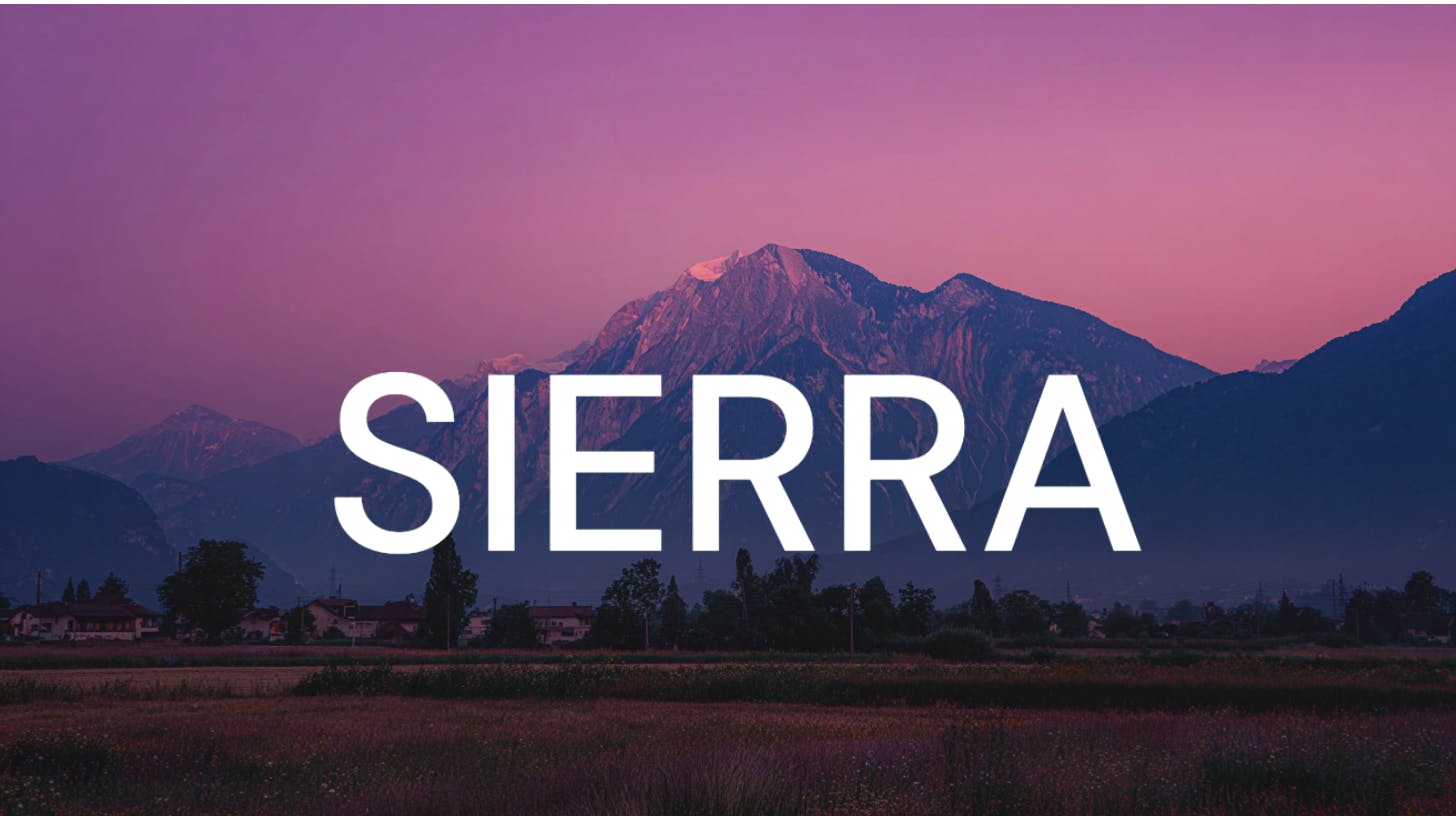Can a single token solve the persistent dilemma between earning sustainable yields and maintaining liquidity in decentralized finance?
Sierra Protocol claims it can.
The protocol launched SIERRA on November 13, 2024, marking the entry of what it calls the first dynamically rebalanced Liquid Yield Token on the Avalanche network. This launch represents an attempt to address structural issues that have plagued yield-bearing tokens, from depeg events to limited portfolio diversification.
The timing matters. Avalanche’s DeFi Total Value Locked surpassed $2 billion in 2025, reflecting a 53% quarter-over-quarter increase in Q4 2024. Meanwhile, the RWA tokenization market reached $24 billion in mid-2025, growing 380% over three years, with projections suggesting it could hit $30 trillion by 2034. Sierra positions itself at the intersection of these trends by creating a token that combines investment-grade real-world assets with blue-chip DeFi protocols.
Understanding Liquid Yield Tokens and Their Evolution
Liquid Yield Tokens differ from yield-bearing stablecoins in a critical way. While stablecoins like USDC maintain a $1 peg regardless of underlying performance, LYTs allow their value to fluctuate based on portfolio returns. Think of it as the difference between a savings account that promises $1 per dollar deposited versus an investment fund where your share value changes with market conditions.
The distinction matters because stablecoin structures have shown vulnerabilities. Midas, another LYT protocol, explained that yield-bearing stablecoins face a fundamental constraint by maintaining the $1 peg, they limit their investable universe to zero-duration collateral. When underlying strategies underperform, the token cannot meet redemptions at par value, triggering depeg events. The 2022 stETH discount and UST collapse demonstrated these risks.
LYTs remove this constraint. By allowing token value to float based on underlying asset performance, they can invest in a broader range of yield-generating opportunities. Sierra takes this concept further by being the first to combine both traditional finance and DeFi yield sources within a single, dynamically rebalanced portfolio.
Sierra’s Architecture and Operational Framework
Sierra’s infrastructure operates through three layers. Users can acquire SIERRA tokens by swapping USDC through the Sierra web app or on LFJ (formerly Trader Joe), Avalanche’s largest decentralized exchange. Once purchased, yield begins accruing immediately without lockups, minimum balances, hidden fees, or staking requirements.
The token’s backing consists of a diversified portfolio split between real-world assets and DeFi protocols. On the RWA side, Sierra allocates to U.S. Treasury money market funds and investment-grade commercial paper. For DeFi exposure, it integrates with established protocols including AAVE, Morpho, Euler, Wildcat, and Pendle.
What differentiates Sierra from static yield products is its dynamic rebalancing mechanism. The protocol continuously adjusts portfolio weights according to its Risk Framework, responding to changing market conditions. For example, if DeFi yields decline while Treasury rates rise, the system can shift allocations to optimize risk-adjusted returns. This automation removes the manual rebalancing burden that institutional investors typically face.
The partnership with OpenTrade enables this flexibility. OpenTrade’s institutional-grade stablecoin yield-as-a-service infrastructure manages operational workflows across all yield sources through a single protocol. All RWA collateral sits in secured accounts with Tier 1 financial institutions, managed by an FCA-regulated asset manager. DeFi vaults utilize Fireblocks’ whitelisting and policy-enforcing features for cryptoasset custody. This dual-layer security approach addresses concerns about both traditional financial counterparty risk and DeFi smart contract vulnerabilities.
Transparency and Data Access
Sierra provides real-time portfolio insights through its Transparency Dashboard. Users can access detailed metrics about asset allocations, yield sources, and performance directly through the website. The dashboard also offers CSV downloads and API access for users who want to conduct their own analysis or integrate Sierra data into external tools.
This level of transparency responds to a common criticism of yield products, that users cannot verify what their funds are actually doing. By making portfolio composition and performance data publicly available, Sierra allows users to understand exactly how their capital is deployed and what risks they are taking.
Mitchell Nicholson, Core Contributor of the Sierra Protocol, explained his perspective on the launch.
“We’re very excited about the launch of SIERRA after many months of planning and building. We believe Sierra’s flexible reserve management strategy, combined with dynamic rebalancing capabilities, make SIERRA a unique offering that many DeFi users will prefer holding.
We look forward to announcing many partnerships over the coming weeks that provide SIERRA with enhanced utility across both DeFi and CeFi.”
Dave Sutter, CEO of OpenTrade, added context on the technical foundation.
“We’re proud that Sierra has chosen OpenTrade as the technical foundation to build such an innovative protocol as part of the fast-growing DeFi ecosystem. The simplicity, transparency and composability of Sierra represents a fresh approach to liquid yield tokens.
Seeing the unique way Sierra utilizes OpenTrade’s institutional-grade infrastructure makes supporting its future growth so exciting. We look forward to continuing to support Sierra and its ecosystem for a long time to come.”
Market Context and Competitive Positioning
The RWA tokenization sector has experienced substantial institutional adoption. BlackRock’s BUIDL fund alone holds $2.9 billion in assets, representing tokenized U.S. Treasury exposure. Franklin Templeton, Apollo, JPMorgan, and UBS have all launched tokenization initiatives. The sector’s growth from $85 million in 2020 to $24 billion by mid-2025 demonstrates that traditional finance institutions see genuine utility in blockchain infrastructure for asset management.
However, most existing tokenized products focus on single asset classes. BlackRock’s BUIDL invests 100% in short-term government securities. Other products concentrate on private credit or specific DeFi strategies. Sierra’s approach of maintaining a diversified portfolio across both traditional and decentralized finance represents a different model, one that attempts to capture upside from multiple yield sources while using diversification to manage risk.
The choice of Avalanche as the launch platform connects to the network’s infrastructure advantages. Avalanche’s architecture supports 4,500 transactions per second with stress testing indicating peaks up to 20,000 TPS. The network’s low latency and high throughput enable real-time portfolio rebalancing and efficient yield distribution. The recent Avalanche9000 upgrade reduced the base C-Chain transaction fee from 25 nAVAX to 1 nAVAX, making it more cost-effective for frequent rebalancing operations.
Avalanche’s DeFi ecosystem also provides established protocols for yield generation. Benqi, AAVE, and LFJ represented 73% of Avalanche’s $1.3 billion DeFi TVL in Q4 2024. This existing infrastructure means Sierra can tap into proven yield sources rather than relying on untested protocols.
Final Thoughts
Sierra Protocol attempts to solve a genuine problem in DeFi, how to generate sustainable yields without the structural risks inherent in pegged assets. By allowing token value to float and maintaining a diversified portfolio, it removes the constraint that has led to multiple stablecoin failures. The integration of institutional-grade RWAs with DeFi protocols represents a logical evolution as traditional finance and decentralized systems continue converging.
The dynamic rebalancing mechanism addresses a real inefficiency. Most investors lack the time, expertise, or capital efficiency to manually rebalance portfolios across multiple chains and yield sources. Automating this process while maintaining transparency could attract users who want yield exposure without active management burden.
The competitive landscape also matters. Midas launched similar LYT products in February 2025, partnering with Edge Capital, RE7 Capital, and MEV Capital for actively managed strategies. Other protocols will likely enter this space as the RWA tokenization market expands. Sierra’s ability to maintain its claimed advantage in diversification and dynamic rebalancing will determine whether it captures meaningful market share.
For users considering SIERRA, the value proposition centers on convenience and diversification. Instead of managing separate positions across Treasuries, money market funds, and multiple DeFi protocols, they can hold a single token that automatically optimizes across these sources. The trade-off involves accepting less control over specific allocations and trusting Sierra’s Risk Framework to make appropriate decisions.
The launch represents DeFi maturation. As the sector moves beyond speculative yield farming toward sustainable strategies, products blending traditional finance stability with DeFi flexibility will proliferate. Whether Sierra dominates or validates the model for others remains uncertain. Upcoming partnerships will prove critical. If SIERRA becomes collateral, provides liquidity, or generates additional yields through composability, utility increases beyond simple yield generation. These integrations could create network effects reinforcing adoption.
Sierra Protocol launched an experiment in hybrid finance addressing real pain points around yield sustainability, diversification, and operational efficiency. Execution quality, risk management effectiveness, and transparency maintenance will determine whether it reshapes how DeFi users approach yield generation.
Don’t forget to like and share the story!
:::tip
This author is an independent contributor publishing via our business blogging program. HackerNoon has reviewed the report for quality, but the claims herein belong to the author. #DYO
:::










